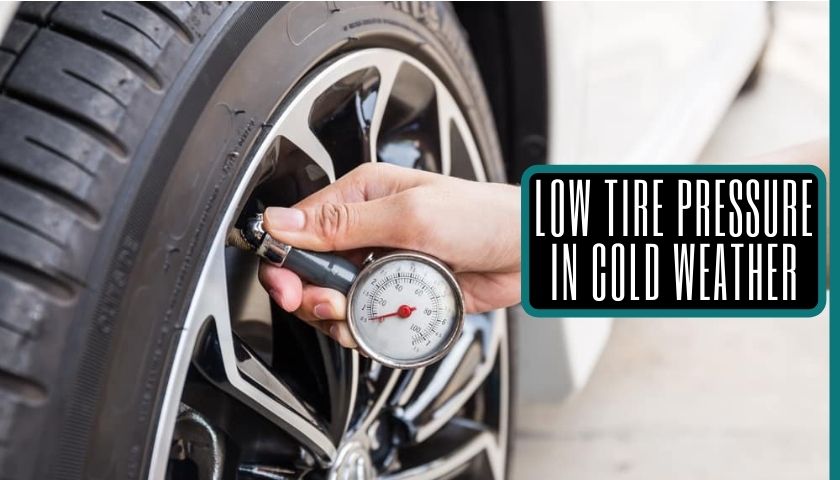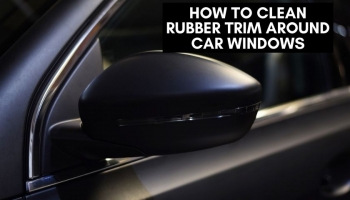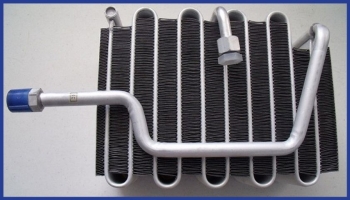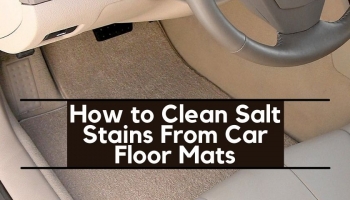Low Tire Pressure In Cold Weather | Why & What To Do?

Driving becomes more challenging when it is biting cold. Because most of the time, the tires lose pressure in cold temperatures. That means underinflated tires which cause tire failure.
A low-pressure tire can inflict an accident because it adds tire stress, irregular wear, and finally, loss of control. You need to be careful about that. In cold weather, a tire can lose more than half of its air pressure.
So you probably think about low tire pressure in cold weather what to do? You will get the solution right here. If you don’t take proper steps for this, it may cause serious injuries. Hence, read the article carefully.
Contents
Why do tires lose pressure in cold weather?
As we know, tires get under-inflated during cold weather but what is the reason? To understand this you need to know a quick science. If the temperature is hot then the air’s molecules move rapidly. Or if the temperature is cold, then the molecules move slower. Following this science, the different weather types affect tire inflation.
For a good ride, the tires need certain air pressure scaled in pounds per square inch. Too much or too low air pressure will lead to unstable vehicle riding. According to the experts, since the temperature tends to fall or up, you should check tire inflation frequently. The tire can drop almost 1 or 2 pounds PSI in every 10 degrees Fahrenheit, so test the four tires altogether whenever you check.
Impacts of low tire pressure
The low tire pressure in the cold weather can negatively impact the car performance and also may cause severe accidents.
- Low air pressure can blow out the tire. While the tire pressure drops too low, the tire’s sidewalls bend more, and at one point, the rubber gets separated from the carcass. The tires blow out suddenly, and it causes a loss of control which is the main reason for accidents.
- It increases breaking time as the tires turn slowly, so the car needs more time to stop. There are also obvious chances of puncture because of being softer for less air pressure. The tires slide more on the wet road.
- While you notice the fuel economy is failing dramatically, you need to check the tires. The low tire pressure decreases the fuel economy as the underinflated tire needs more energy to roll. When the tire needs more power, the engine has to work faster that amounts to more fuel.
- You can not handle the car properly if the tires are underinflated. The low tire has less traction and stability, so it responds late to the steering inputs. It can be dangerous when the tires need to respond in an emergency situation. In the cold weather, it is more challenging to handle as the road becomes slippery.
- Low pressure can damage the tire permanently. It deforms the tire’s footprint and catches more wear resulting in impulsive replacement, and it costs more than any other elements.
What should you do?
Low tire pressure can be harmful in many ways. But in cold weather, it is difficult to maintain the perfect air pressure. So you need to do the following things:
1. Check the tires often
It would be best if you check out the tire pressure before every two weeks when it is freezing cold outside. If you didn’t drive the car for a while, you must check the tires. However, for regular usage, you can check in the morning after setting overnight or at least three hours later of driving.
2. Examine the TPMS dash light
TPMS means a tire pressure monitoring system that warns you when the tire is going to underinflation. Usually, when the tire pressure is below 25 percent the TPMS dash light turns on. Whenever the light is on, you need to check the air pressure. Not for cold, the low pressure can also happen for tire leaks. Many modern cars have sound warning systems, or advanced cars have real-time air pressure readouts.
3. Inflate the tire pressure
After checking the pressure you definitely know whether it should be inflated or not. You will find in the car manual what is the right tire pressure for the car tires. Usually, the recommended air pressure is approximately 30-35 PSI. Then add the needed air to the tire.
For the winter season, you must inflate adequately every month. But you must check it regularly and add air pressure if needed.
Frequently Asked Questions (FAQ)
- How to check tire air pressure?
For checking, you must go through this process below:
- Always check the tire before driving. And if you are doing it after driving, make sure the tire is fully cold.
- You need a quality gauge to measure the air pressure. The digital gauge is much easier to use. Place it in the valve stem and press down until the hiss air sound is stopped.
- Check the PSI reading in the gauge bar.
- Match with the car tire’s air recommendations. If the pressure is high, let some air out. On the other hand, if it is low, add more air to fully inflate.
- Is it normal to drop air pressure in the cold weather?
The tires drop air pressure gradually, and they can be punctured. But especially in the winter, the air becomes dense, and the tire’s air moves slowly; that’s why you will see air pressure drop in the winter. It is proven that the tire drops 1-2 PSI in every 10 degrees Fahrenheit. So we can say that it is normal, but you need to check if there is any leakage in the tire.
Final words
Low tire pressure can be risky for you. Many accidents are occurring for this reason. Some car owners don’t have a great thought about the tire pressure, but they shouldn’t neglect it. In the winter season, where the temperature is varied, the car owner needs to be extra careful. In this article, we have described the whole issue and give you the proper solution. So always stay safe and drive safe.








